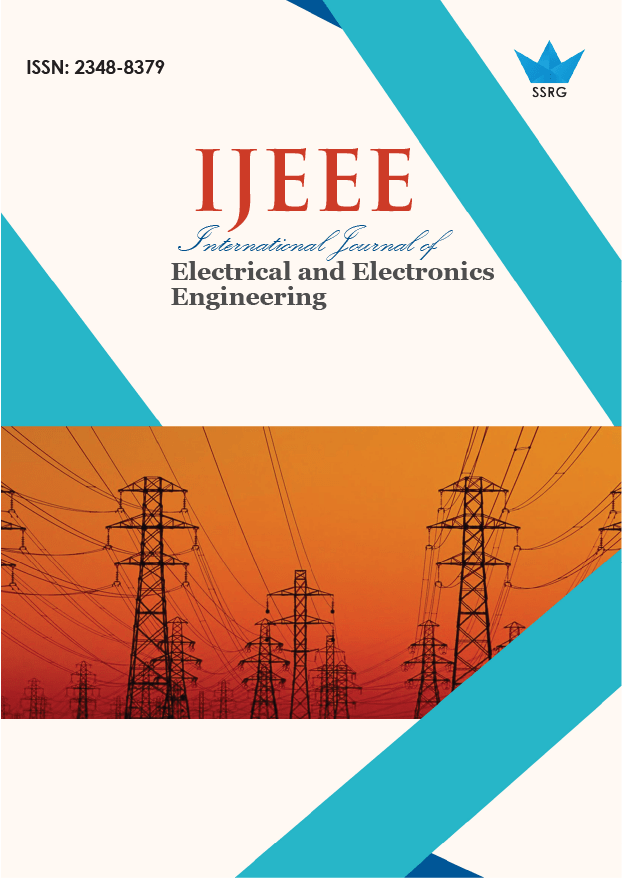Fast and Low Power Implementation of Ternary ALU

| International Journal of Electrical and Electronics Engineering |
| © 2025 by SSRG - IJEEE Journal |
| Volume 12 Issue 7 |
| Year of Publication : 2025 |
| Authors : Nagarathna, Srividya B V, Soumya S, Deepti Raj, Vinod B Durdi |
How to Cite?
Nagarathna, Srividya B V, Soumya S, Deepti Raj, Vinod B Durdi, "Fast and Low Power Implementation of Ternary ALU," SSRG International Journal of Electrical and Electronics Engineering, vol. 12, no. 7, pp. 264-273, 2025. Crossref, https://doi.org/10.14445/23488379/IJEEE-V12I7P119
Abstract:
A ternary ALU is an Arithmetic Logic Unit (ALU) that operates in a ternary (base-3) number system as opposed to the traditional binary (base-2) number system. In contrast to a binary ALU, which only processes 0s and 1s, a ternary ALU (Trit rather than bit) processes three possible values per digit. Every Trit contains more than a bit of information. For some ternary processes, utilizing fewer logic gates can reduce energy consumption. Trits represent the values of 0, 1, or 2 (an imbalanced ternary), making them efficient. A ternary ALU performs arithmetic and logical operations using ternary logic gates and ternary arithmetic circuits. The Ternary ALU is designed using forced-stack multi-threshold MOSFETS. On five-digit ternary data, operations like addition, subtraction, multiplication, and Trit-wise AND, OR, NAND, NOR, XOR, and NOT are carried out. To guarantee the least amount of energy usage, power analysis is done. Nevertheless, it only consumes 81.4% of the power, proving the effectiveness of low-power design techniques. Also, comparing ternary multipliers to binary multipliers, the performance analysis reveals a switching speed gain of roughly 5.35%. Cadence Virtuoso is used in the design and implementation of the ternary logic gates and circuits using 45nm technology.
Keywords:
Low power, Forced Stack Multi Threshold Transistors (FSMT), Ternary, Decoder, Logic Gates, Arithmetic Unit, Logic Unit.
References:
[1] Thomas N. Theis, and H.-S. Philip Wong, “The End of Moore’s Law: A New Beginning for Information Technology,” Computing in Science & Engineering, vol. 19, no. 2, pp. 41-50, 2017.
[CrossRef] [Google Scholar] [Publisher Link]
[2] Ahmet Unutulmaz, and Cem Ünsalan, “Implementation and Applications of a Ternary Threshold Logic Gate,” Circuits, Systems, and Signal Processing, vol. 43, no. 2, pp. 1192-1207, 2024.
[CrossRef] [Google Scholar] [Publisher Link]
[3] Guangchao Zhao et al., “Efficient Ternary Logic Circuits Optimized by Ternary Arithmetic Algorithms,” IEEE Transactions on Emerging Topics in Computing, vol. 12, no. 3, pp. 826-839, 2023.
[CrossRef] [Google Scholar] [Publisher Link]
[4] Xiao-Yuan Wang et al., “A Review on the Design of Ternary Logic Circuits,” Chinese Physics B, vol. 30, no. 12, pp. 1- 12, 2021.
[CrossRef] [Google Scholar] [Publisher Link]
[5] Zarin Tasnim Sandhie, Farid Uddin Ahmed, and Masud H. Chowdhury, “Design of Ternary Logic and Arithmetic Circuits Using GNRFET,” IEEE Open Journal of Nanotechnology, vol. 1, pp. 77-87, 2020.
[CrossRef] [Google Scholar] [Publisher Link]
[6] A. Steegen et al., “65nm CMOS Technology for Low Power Applications,” IEEE International Electron Devices Meeting, 2005. IEDM Technical Digest, Washington, DC, USA, pp. 64-67, 2005.
[CrossRef] [Google Scholar] [Publisher Link]
[7] S. Zhao et al., “Transistor Optimization for Leakage Power Management in a 65nm CMOS Technology for Wireless and Mobile Applications,” Digest of Technical Papers. 2004 Symposium on VLSI Technology, Honolulu, HI, USA, pp. 14-15, 2004.
[CrossRef] [Google Scholar] [Publisher Link]
[8] K. Koh et al., “Highly Manufacturable 100nm 6T Low Power SRAM with Single Poly-Si Gate Technology,” 2003 International Symposium on VLSI Technology, Systems and Applications. Proceedings of Technical Papers. (IEEE Cat. No.03TH8672), Hsinchu, Taiwan, pp. 64-67, 2003.
[CrossRef] [Google Scholar] [Publisher Link]
[9] A.P. Dhande, V.T. Ingole, and V.R. Ghiye, Ternary Digital System: Concepts and Applications, SM Group, SM Medical Technologies Private Limited, pp. 1-131, 2014.
[Google Scholar]
[10] Furqan Zahoor et al., “Design Implementations of Ternary Logic Systems: A Critical Review,” Results in Engineering, vol. 23, 2024.
[CrossRef] [Google Scholar] [Publisher Link]
[11] Sneh Lata Murotiya, and Anu Gupta, “Design of CNTFET-Based 2-Bit Ternary ALU for Nanoelectronics,” International Journal of Electronics, vol. 101, no. 9, pp. 1244-1257, 2014.
[CrossRef] [Google Scholar] [Publisher Link]
[12] A.P. Dhande, and V.T. Ingole, “Design and Implementation of 2 Bit Ternary ALU Slice,” SETIT 2005 3rd International Conference: Sciences of Electronic, Technologies of Information and Telecommunications, Tunisia, vol. 17, 2005.
[Google Scholar] [Publisher Link]
[13] Chetan Kumar Vudadha, and MB Srinivas, “Design Methodologies for Ternary Logic Circuits,” 2018 IEEE 48th International Symposium on Multiple-Valued Logic (ISMVL), Linz, Austria, pp. 192-197, 2018.
[CrossRef] [Google Scholar] [Publisher Link]
[14] Vijay Kumar Sharma, “A Survey of Leakage Reduction Techniques in CMOS Digital Circuits for Nanoscale Regime,” Australian Journal of Electrical and Electronics Engineering, vol. 18, no. 4, pp. 217-236, 2021.
[CrossRef] [Google Scholar] [Publisher Link]
[15] Malachy Eaton, “Design and Construction of a Balanced Ternary ALU with Potential Future Cybernetic Intelligent Systems Applications,” 2012 IEEE 11th International Conference on Cybernetic Intelligent Systems (CIS), Limerick, Ireland, pp. 30-35, 2012.
[CrossRef] [Google Scholar] [Publisher Link]

 10.14445/23488379/IJEEE-V12I7P119
10.14445/23488379/IJEEE-V12I7P119